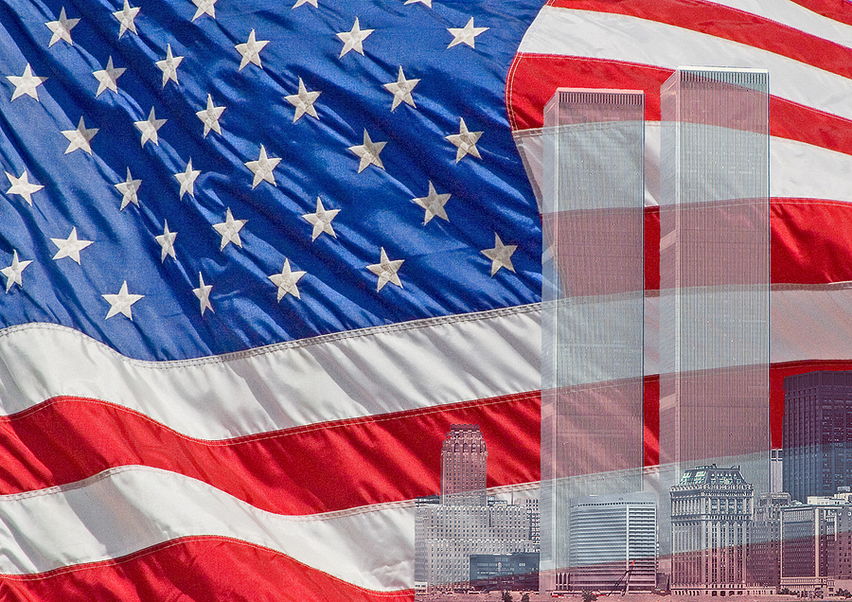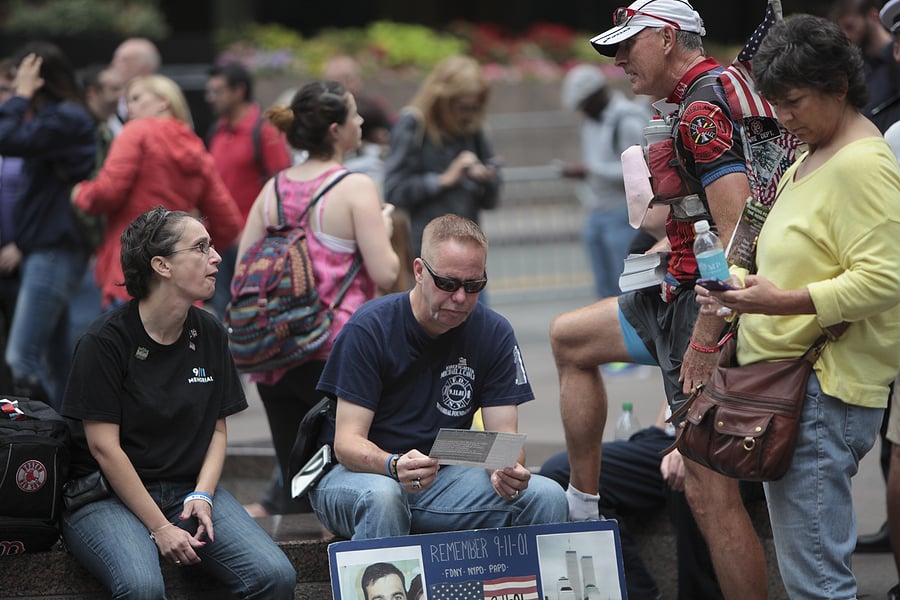Deaths That Have Happened Since 9/11

On September 11, 2001, terrorists killed nearly three thousand people in the deadliest attack in U.S. history, when commercial airplanes full of passengers collided into the North and South Towers of the World Trade Center, and the Pentagon. Here are the Deaths That Have Happened Since 9/11. All of the passengers aboard a third commercial airline perished when the plane crashed into the ground at Shanksville, PA.
As devastating as the day was for the country and the world more people have died from exposure to the toxic dust over the years after the attacks than died on 9/11.
According to Scientific American, more than 4,000 participants of the WTC Health Program a federal program that provides medical treatment and monitoring services to 9/11 responders and survivors have died. While not all of these deaths are related to 9/11-linked medical conditions, the number of participants who have died over the past number of years is particularly startling for a program with only 112,000 members since its creation. Additionally, the stories and statistics paint a very clear picture: The trauma of 9/11 remains, 20 years later.
What Types of Health Conditions Have 9/11 Responders and Survivors Acquired?
Around 74 percent of the 9/11 survivors and responders who are members of the WTC Health Program have been diagnosed with at least one physical or mental health condition. Twenty percent of the members have at least one type of cancer, while more than a quarter of its members are diagnosed with a mental health condition.
Other statistics about this membership include:
- The two most commonly diagnosed conditions for 9/11 responders and survivors are chronic rhinosinusitis (nasal inflammation) and gastroesophageal reflux disease (GERD), a condition in which acid gastric fluid travels back up the esophagus, resulting in heartburn.
- Cancer is the third most prevalent diagnosis obtained by WTC Health Program members, with prostate cancer the most common in men and breast cancer the most common in women. Prostate cancer is most common among responders because 87 percent of the responders who worked at Ground Zero on 9/11 or in the months that followed were male.
- Nearly half of all responders have a respiratory or digestive condition related to 9/11.
- According to one responder, the early efforts regarding the health impacts of 9/11 to responders and survivors included trying to convince members of Congress that people become ill.
Which 9/11-Impacted Group Was Hit Hardest By Deadly Medical Conditions?
The New York City Fire Department (FDNY) is among the groups hardest hit not only on 9/11 but in the 20 years since.
- 343 members of FDNY died on 9/11, many of whom were among the first responders and rushed into the buildings to assist the occupants just before those buildings collapsed.
- More than 200 members of FDNY have died of 9/11-related issues since the attacks.
- More than 15,000 firefighters, emergency medical services staff, and civilians have enrolled in the WTC Health Program.
- 9 percent of FDNY’s 9/11 responders have symptoms of post-traumatic stress disorder 20 years later, and 18 percent have a current diagnosis of depression.
FDNY members were not only at the scene before the towers collapsed, but they remained there for many months following the attack. They were not given the appropriate respirators or other personal protective equipment until a week after the attack. A recent report from ABC News noted that two-thirds of FDNY’s firefighters and EMTs who responded to the World Trade Center on the morning of September 11, 2001, have been diagnosed with long-term illnesses.
Downtown Workers and Residents also Hit Hard – New Diagnoses Still Occurring 20 Years After 9/11?
While much of society relegated 9/11 to memorial events, the wounds of 9/11 have not healed for many. Doctors regularly diagnose new 9/11-related illnesses through the WTC Health Program’s affiliated facilities and providers. The most common type of diagnosis made 20 years after the fact is cancer.
Cancer caused by toxic exposure such as what responders and survivors at and near Ground Zero experienced does not appear instantaneously. Instead, there is a length of time that the disease is dormant in the body before it begins to develop, grow, and spread. This length of time is often called the latency period.
According to documentation from the WTC Health Program, certain minimum latency periods after exposure to 9/11-related cancers include:
- Mesothelioma: 11 years.
- Most solid cancers: 4 years.
- Leukemia and lymphoma: 146 days.
- Thyroid cancer: 2.5 years.
- Most childhood cancers: 1 year.
The minimum latency period does not mean that the disease must appear after that timeframe for 9/11 exposure to cause it. Instead, these periods indicate the shortest amount of time that will pass before symptoms of the disease begin appearing. Researchers readily acknowledge some issues with establishing minimum latency periods, including factors such as smoking, diet, or genetics that could also affect an individual’s susceptibility to cancer and the time it takes for it to develop and progress.
What 9/11 Prostate Cancer Research Shows About Latency Periods
Using information provided by and about responders, including through the WTC Health Registry, the WTC Health Program, and 13 state cancer registries, researchers from the Albert Einstein College of Medicine in Bronx, NY, discovered that responders who arrived early to the scene or who got caught in the dust plume when the towers collapsed were significantly more likely to acquire prostate cancer.
Not only that, but those who were diagnosed with prostate cancer began experiencing symptoms of the disease just slightly more than five years after exposure. This is far shorter than the 10 to 20 year latency period in men suffering from the disease who were not exposed to 9/11 toxins.

The Most Deadly of the 9/11-Related Conditions
Many 9/11-related non-cancer conditions involve the body’s respiratory system. Unfortunately, the vast majority of responders who suffered respiratory issues that began on or shortly after 9/11 never regained the lung function they had before the attacks. Twelve percent of the FDNY responders who suffered immediate respiratory symptoms continue to experience declines in lung function that are progressing at a much faster rate than what occurs normally as part of the aging process.
Research into the lung function of 9/11 FDNY responders indicates that while asthma is very common in this group and COPD is relatively rare, a newly defined airway disorder occurs in these individuals that overlaps the symptoms of both illnesses. Unfortunately, the individuals suffering from this subtype often have poorer outcomes than those suffering only from asthma or only from COPD.
Despite the seriousness and chronic nature of many 9/11-related non-cancer conditions, few are as deadly as the cancers linked to 9/11 toxic dust exposure. FDNY’s studies of the cancers that their membership has experienced reveal a significant percentage increase in the incidence of cancers among WTC first responders than those who were not WTC responders.
In 2018, FDNY attempted to estimate how many new cancers would be diagnosed among WTC responders between 2012 and 2031. It predicted increases in thyroid cancer, prostate cancer, and melanoma, and fewer patients with lung, colorectal, or kidney cancers. In 2018, only about 15 percent of the cancers from exposure to the 9/11 toxins have developed and were diagnosed.
The Impact of 9/11-Related Illnesses on Other Responder Groups
While FDNY was the responder group most significantly impacted on 9/11 and in the years that have followed, other responder groups have also experienced an increase in cancers and other serious medical conditions, including:
- The New York City Police Department (NYPD), which lost 23 of its members on September 11, 2001. By 2017, the department matched that number, with 23 current or former employees who had died from 9/11-related conditions.
- A single FBI agent died in the attacks at Ground Zero on 9/11. Since then, at least 15 agents have died from cancers linked to their exposure at the World Trade Center.
The Impact of Mental Health Conditions On Long-Term Survival of Responders
Eighty-three percent of FDNY’s 9/11 responders still report 9/11 as a traumatic experience, 20 years later. You may certify mental health conditions, including PTSD, through the WTC Health Program. Additionally, sufferers can obtain compensation for the impacts of their condition through the VCF. PTSD is a mental health disorder that arises from exposure to a traumatic event, such as 9/11. The condition presents with unwanted thoughts or memories of the event, flashbacks, nightmares, anger, and depression. There has also been a link between PTSD and an increased risk of suicide.
Can Deaths of Responders and Survivors Be Prevented?
Some of the most serious, debilitating cancers and other conditions are listed as 9/11-related conditions. Not everyone who is diagnosed with 9/11-related cancer or serious non-cancer condition will survive. However, FDNY reported that among its responders who participated in the WTC Health Program, there was a 34 percent lower risk of cancer death when compared to those who were exposed to 9/11 dust but did not seek medical care and monitoring services through the WTC Health Program.
The WTC Health Program is also associated with a 44 percent reduction in deaths from prostate cancer and a 45 percent decrease in the number of deaths from colon cancer.
The reasons for the declines in death rates for WTC Health Program participants include:
- Early detection of certain types of cancer, such as prostate cancer, through annual screening services offered through the program. Early detection generally provides the best opportunity for recovery because cancer has not had time to spread. Early-stage cancers also usually afford the highest number of effective treatment options.
- Case management and a full battery of no-cost treatment options through the technologically advanced medical centers associated with the program, and care provided by individuals specifically trained in treating cancers resulting from toxic exposure.
See if you qualify today!



